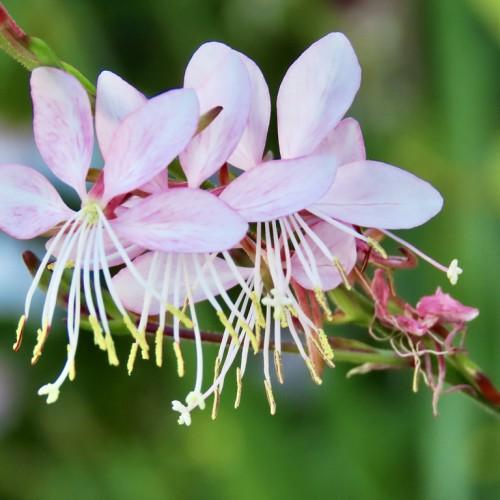
gaura
Gaura lindheimeri KARALEE PETITE PINK
Cycle:
Herbaceous Perennial
Watering:
Average
Hardiness Zone:
5 - 9
Flowers:
Flowers
Sun:
Full sun
Leaf:
Yes
Growth Rate:
Low
Maintenance:
Moderate
Salt Tolerant:
Yes
Care Level:
Moderate
watering
Water your Gaura plant deeply at least once a week during the growing season, allowing the top few inches of soil to become slightly dry in between waterings. During the cold winter months, reduce watering to once every 2 to 4 weeks, depending on climate and soil conditions. During hot, dry summer months, water more often. If your Gaura plant starts to wilt during these months, increase watering to 5 or even 7 days, or until soil is saturated. Be sure to check soil moisture levels regularly to prevent any sort of wilting. It is better to underwater than overwater the Gaura.
sunlight
Gaura lindheimeri Karalee Petite Pink prefers full sunlight, at least 6 hours of direct sunlight per day, to thrive. However, this sun requirement can also depend on the geographic region. If the plant is grown in cooler, northern climates, more shade will be needed. If placed in areas with more intense sunlight, midday shade will be beneficial. Because of its high sun requirement, this cultivar of Gaura should be planted in an area where it can get plenty of direct sunshine every day and protected from strong winds.
pruning
Gaura lindheimeri KARALEE PETITE PINK can be pruned as needed to encourage fuller growth and more blooms. Pruning should be done in late winter or early spring before the new shoots appear. Deadhead spent flowers as soon as possible to promote new blooms. Prune off any spindly, weak stems to direct the plant's energy to more productive areas. If the plant is getting too large, it can be lightly trimmed back. Remove any diseased, unproductive growth. It is best to avoid heavy pruning of this species because it may become leggy and become susceptible to disease.
